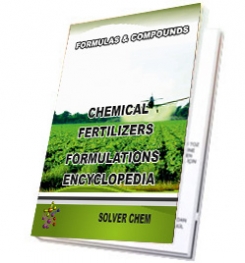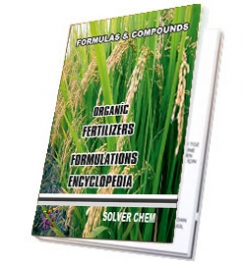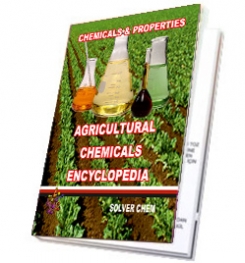Japanese beetles are small pests that carry a big threat. They do not discriminate on what types of plants to feed on, in fact, they are classified as a pest to hundreds of different species. They are one of the most major insect pests in the Eastern and Midwestern US, causing monumental damage to crops each year. Native to Japan, they were first documented in the US in 1919, and have since spread across the country.
How to Identify Japanese Beetles
Japanese Beetles are ½ inch in length and metallic blue-green with tan wings, with small white hairs lining each side of the abdomen. They lay eggs in the soil during June, which develop into tiny white grubs. These grubs will remain under wraps for about 10 months and overwinter and grow in the soil. They emerge from the soil as adult beetles and begin feeding in June. They usually attack plants in groups, which is why damage is so severe. Although the lifecycle of the adult Japanese beetle is barely 40 days, it can cover a lot of ground. Look for leaves that are “skeletonized” (only have veins remaining). This is a tell-tale sign of Japanese Beetles.
How to get rid of Japanese Beetles
- Try to select plants that Japanese Beetles will not be attracted to. See our list of best and worst plants for Japanese Beetles.
- In the grub stage of late spring and fall (beetles have two life cycles per season), spray the lawn with 2 tablespoons of liquid dishwashing soap diluted in 1 gallon of water per 1,000 square feet. The grubs will surface and the birds will love you. Spray once each week until no more grubs surface.
- Unfortunately, the most effective way of getting rid of Japanese beetles is to hand pick them. It's time consuming, but it works, especially if you are diligent.
- You can also purchase parasitic nematodes (most garden centers have them) and drench the soil around the area where you have the problem.
- Neem oil and sprays containing potassium bicarbonate are somewhat effective.
- Put down a dropcloth and, in the early morning when they're most active, shake them off and dump them into a bucket of soapy water. They will not survive.
RELATED TAGS: How to care bean, how to grow bean plants, growing of pepper, fertilization time of pepper, fertilization programme of bean plant,bean plant growing fertilizers, problems of growing bean, types of bean plants, irrigation of bean plants, feeding of beans, seed of bean plants, bean plants growing, bean diseases,what is alternia diseases for bean plants, bean pests, what is aphids of bean plants.
any liquid and solid organic fertilizer,
ORGANIC
FERTILIZERS
FORMULATIONS
ENCYCLOPEDİA
is enough.
This encyclopedia has many formulations about organic soil conditioner,humic acid productions,compositions,fulvic acid manufacturing,organic fertilizers,animal manure,amino acid organic fertilizers, organomineral powder fertilizers,organomineral liquid fertilizers productions,liquid root growth fertilizers formulas,granular root growth fertilizers,seaweed organic fertilizers,wermicompost fertilizers formulations,gel organic fertilizers,organomineral gel fertilizers manufacturing and any organic fertilizers etc.
All organic fertilizers in the encyclopedia are producible easily.You need no help and no technıcal support. The encyclopedia is enough to produce organic fertilizers itself.
ORGANIC
FERTILIZERS
FORMULATIONS
ENCYCLOPEDIA
is written clear and understandable.
RELATED TAGS: What is organic fertilizer,preparation of organic soil conditioner, liquid organic fertilizer manufacturing,animal manure manufacturing, manufacturing proces of animal manure,chicken manure,efficiency of humic acid in soil,effect of humic acid in plants, advantages of humic acid in agriculture, types of animal manure,seaweed fertilizer manufacturing process,production of liquid seaweed fertilizers, what is organic compost, preparation of organic compost,how to use organic compost,making organic compost, using of seaweed fertilizer,properties of seaweed organic fertilizers how to make liquid organic fertilizers, making organic compost,types of organic compost,manufacturing process of organic compost, how to make organic compost fertilizers, production of organic fertilizers, how to make organomineral fertilizer, production of organomineral fertilizers, calculating liquid organomineral fertilizers,powder organomineral fertilizers manufacturing,preparation of organomineral fertilizers,types of liquid organomineral fertilizers, manufacturing process solid humic acid, formulation of humic acid,value of humic acid,manufacturing process of fulvic acid,how to produce humic acid,what is leoardite,where to use leonardite,types of leonardite,properties of leonardite,analyzes of leonardite,specification of leonardite, values of leonardite, what is leonardite humate,what is potassium humate, liquid humic acid preparation,powder humic acid production, granular soil conditioner manufacturing process, powder soil conditioner making,formulation of organic soil conditioner, making powder humic acid,humic acid production, composition of organic fertilizers,how to use organic fertilizers,why to use organic fertilizer,types of organic fertilizer,benefits of organic fertilizers,wermicompost fertilizers making, powder organic fertilizers,how to use organic fertilizers, making wermicompost fertilizer, formulation of seaweed fertilizers, amino acid fertilizer production,granular organic fertilizer,amino acid organic fertilizer manufacturing, properties of organic fertilizers, analyzes of organic fertilizer, specification of organic fertilizers, where to use organic fertilizers, what is soil amendments, humic acid making, how to make powder humic acid, manufacturing process of fulvic acid, herbal fulvic acid making, liquid humic acid process, formulation of humic acid,organic fertilizers for plants, organic fertilizers in agriculture, how to produce organic fertilizers, animal manure manufacturing process, herbal fertilizers, what is organic fertilizer compost, what is organic agriculture, how to make organic agriculture, advantages of organic fertilizers, effects of organic fertilizer, results of organic fertilizers, indications of organic fertilizers, symptoms of organic fertilizers, preparation of organic fertilizers, calculation of organic fertilizers, compounds of organic fertilizers,composition of liquid organic fertilizers, fertilization of organic fertilizers,why to use organic fertilizers.what is humate, types of humates,benefit of humate,potassium humate manufacturing process.,using powder soil conditioner, properties of granular soil conditioner,what is pellet organic soil conditioner.what is amino acid fertilizer, how to use organic amino acid fertilizsers,making amino acid fertilizers,formulation of amino acid fertilizers,manufacturing process of amino acid fertilizers, what is organic compost, where to use organic compost, types of organic compost in plants,benefits of organic compost in soil, preparation of organic compost in agriculture.


E - BOOKS AND HARD BOOKS

HOW TO BUY
AGRICULTURE ENCYCLOPEDIAS AND VIDEOS
|
|
|
|
|
|
|
|
|
